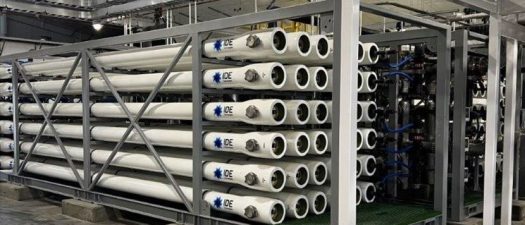Across industries, the move toward sustainability is no longer optional — it’s essential. .
Everything You Need to Know About Industrial Water Treatment
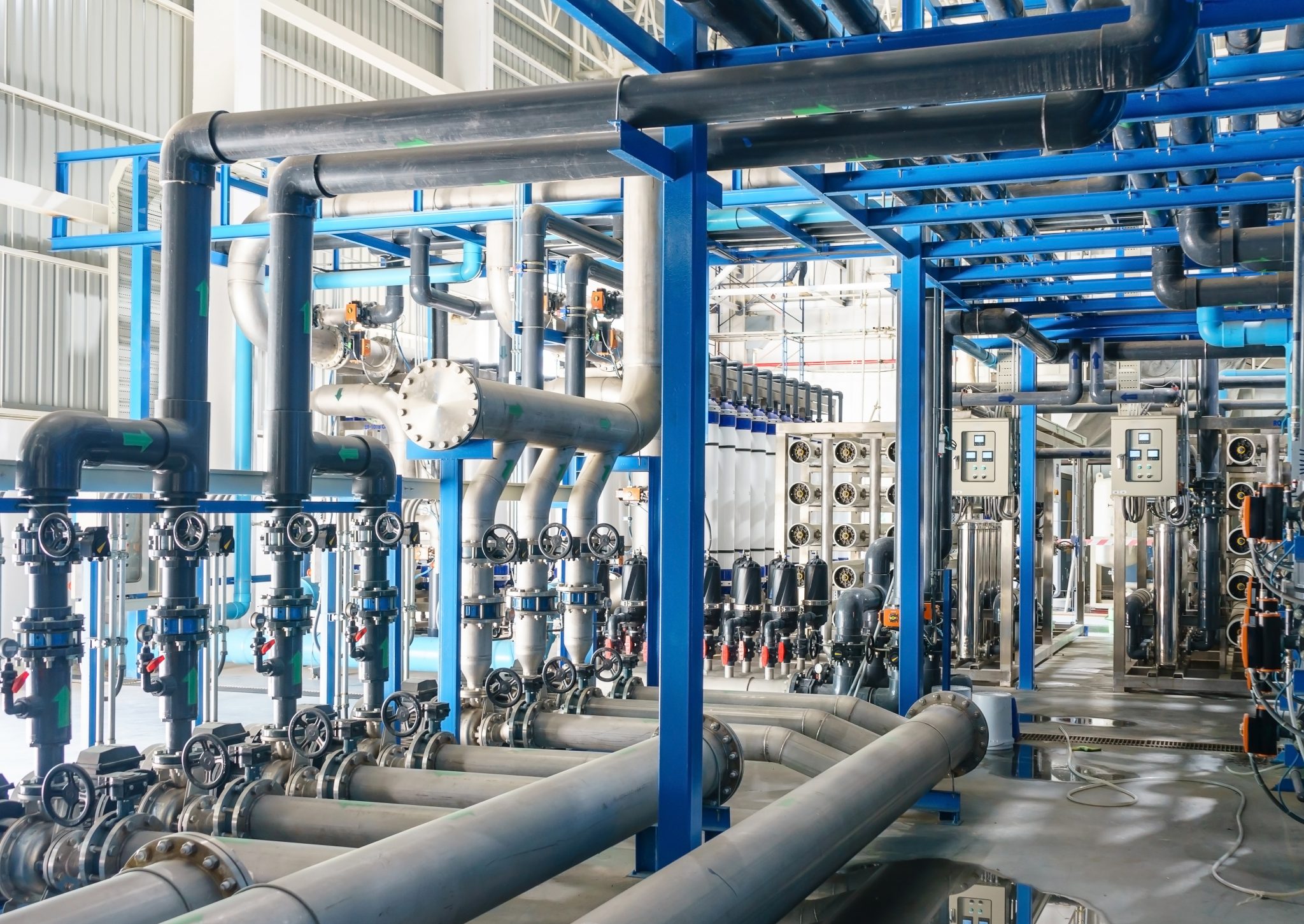
Many industries rely on water and therefore need to understand the best way to approach water treatment and management. Sometimes water needs to be treated so that it’s pure enough to be used in the process of what’s being produced. This might be the case with something like food and beverage production or medicine production. Other times water filtration is needed for the safe disposal of the industry’s by-products.
Interestingly, the concept of water treatment is not new and dates back to ancient civilizations. However, it’s notable that just prior to the Industrial Revolution, Sir Francis Bacon experimented with the desalination of seawater by passing it through layers of sand. Although his method was ultimately unsuccessful, since the filtered water remained salty, this type of trial is one of the early developments attributed to modern water treatment technology. In fact, industrial sand filters are still commonly used today for removing suspended solids from water.
The options for water treatment technology have come a long way. And in recent years, utilizing approaches like zero liquid discharge (ZLD) have opened up new ways to tackle current water challenges.
Due to a combination of industry-specific water requirements and environmental regulatory changes, the industrial water treatment industry is expected to continue growing with an increased demand for water reclamation and the adoption of membrane technology. As water scarcity concerns and discharge requirements continue to increase, understanding the latest technology and options for effective water treatment can help solve water challenges.
While the overarching issues affect all industries that use water, there are unique challenges that can vary depending on the differing needs of each sector.
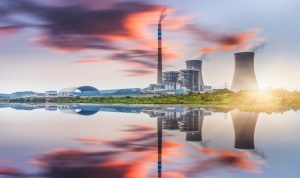
Key Industries Requiring Water Treatment
The need for achieving required levels of water purity and meeting environmental regulations for liquid disposal can occur across many industries. The following are some water-intensive industries that can benefit from evaluating water treatment options:
Manufacturing
Various manufacturing industries utilize water in either their processes or the products themselves. Some of the most water-intensive industries include: semiconductor fabrication, food and beverage, pharmaceutical and automotive. Notably, these industries use water as a key component in their manufacturing and heavily rely upon both large quantities of water and higher degrees of water purification.
Although data centers are not strictly a manufacturing plant, they are another example of an industry that relies on large quantities of water when it’s used as a method for cooling.
Power
The power sector is one of the largest consumers of water. Plants can require water for both boiler feed and cooling purposes. High-purity water is essential in order to maintain the equipment’s efficiency.
Mining
Mines can require large amounts of water for their operations and also produce a substantial amount of wastewater. Treating water properly is important from both an operational perspective and to meet environmental regulations.
Key Contaminants in Industrial Water
When evaluating the options for more effective water management, it’s essential to consider the composition of the water in multiple stages, like pre-treatment and end-of-pipe wastewater treatment. It’s important to note that the composition of industrial wastewater varies by industry, so the most applicable solutions can vary by industry as well.
Here’s a short list of some of the key contaminants found in industrial water:
- Physical contaminants: sediments, suspended solids
- Chemical contaminants: heavy metals, chlorine, fluoride, hardness, brine, PFAS, micropollutants
- Biological contaminants: bacteria, algae, viruses, protozoa
- Industrial by-products: oils, greases, organic matter
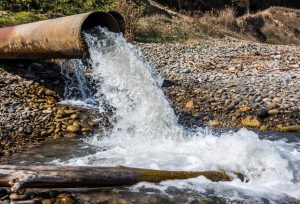
Types of Industrial Water Treatment
- Pre-treatment
Pre-treatment is the initial stage of water treatment, aimed at removing suspended solids, oil & grease, and colloidal impurities from raw water. This step is essential in many industries to ensure the water quality meets specific manufacturing or processing standards before entering the main treatment system. - Wastewater Treatment
This involves treating the water discharged as a by-product of industrial or manufacturing processes. In this process, microorganisms are used to remove organic matter, phosphorus and nitrates from the water. Effective wastewater treatment is critical for regulatory compliance, particularly regarding discharge quality and environmental impact at the end of the treatment line (“end-of-pipe”). - Process Water Treatment
Process water treatment focuses on improving the quality of water used directly in production. This process uses desalination as its main reclaim process. This is particularly vital in industries like semiconductor manufacturing, where even trace contaminants can affect product integrity. The treatment ensures consistent water quality to protect equipment and maintain product standards. - Boiler and Cooling Water Treatment
In facilities that rely on boilers or cooling towers, such as power plants or large manufacturing sites, water treatment is necessary to manage scale, corrosion, and biological growth. Blowdown water, removed to control concentrations of dissolved solids, requires careful treatment to maintain system efficiency and meet discharge regulations.
Industrial Water Treatment Technologies
Physical Chemical Treatments – Used to remove harmful pollutants to protect downstream systems. Chemical processes like pH adjustment and chemical precipitation are used to remove dissolved metals, neutralize acidity or alkalinity, and separate inorganic contaminants. This ensures more efficient, reliable operation of systems like reverse osmosis and biological treatment units. It can also help improve the lifespan of equipment.
Biological Water Treatment – This is often used as a secondary step to remove remaining bio-solids or organic matter. It employs microorganisms, such as bacteria and nematodes, to naturally decompose organic pollutants through a respiration process.
Membrane Solutions – They use pressure to force water through a semipermeable membrane, removing salts, minerals, and other impurities. These are classified based on their pore size.
- Reverse Osmosis (RO) – In industrial applications, RO is essential for producing high-quality water because it has the smallest pore size. (Has a pore size that’s less than one nanometer.)
- Nanofiltration (NF) – It is similar to RO, but the membranes have larger pores. It removes divalent and multivalent ions, such as calcium, magnesium, and sulphate, while having the ability to permeate monovalent ions, such as sodium chloride. (Has a pore size of about one nanometer.)
- Ultrafiltration (UF) – Is used for the separation of larger materials. The particle size is larger than RO and NF. (Has a pore size of 2 to 100 nanometers.)
- Microfiltration (MF) – Filters the largest particles like sand, clay, and silt. It can also filter out some large bacteria. (Has a pore size of 0.03 to 50 micrometers.)
- Deionization Treatment/Ion Exchange – Is commonly used for softening (removing dissolved calcium and magnesium) and nitrate removal.
Thermal Desalination is important when distilled water is required for industrial processes or as part of a ZLD application. MVC (mechanical vapour compression) and MED (multi-effect distillation) are the two main types of thermal desalination.
High Recovery Solutions Including ZLD/MLD – Some industries have more advanced high recovery water requirements. MLD (Minimal Liquid Discharge) and ZLD (Zero Liquid Discharge) are approaches that either minimize or eliminate wastewater discharge from industrial processes. Choosing the right high recovery water systems will depend on each industry and unique situation in order to maximize reuse when necessary.
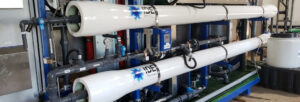
Regulatory Compliance and Sustainability
Global water scarcity is a key issue driving sustainable water initiatives and stricter regulations. The 2015 Paris Agreement focuses on the importance of proper water management in order to achieve climate goals. In addition, there’s been an uptick with industries adopting sustainability initiatives as part of their corporate responsibility programs. This is in order to achieve the UN’s 2030 targets to improve water quality with wastewater treatment.
But while each country may have different sustainability regulations and not all industries have committed to voluntary efforts, there also are newer and stricter regulations for managing industrial wastewater. Removal of harmful per- and polyfluoroalkyl substances (PFAS), known as “forever chemicals”, from wastewater has taken center stage for many industries in addition to municipalities. Tackling PFAS regulations is something that an experienced water treatment provider can assist with in order to meet requirements in a cost-effective way.
Sustainable Water Management Strategies
With the increase of sustainability requirements, industries have been looking to adopt new strategies for better water management. As such, one of the key considerations is being able to achieve high levels of water reclamation or reuse. This is especially important for industries that have a need for large volumes of water because it can create more efficient and cost-effective operations.
For industries that have strict ZLD requirements, one of the strategies available is to reduce the amount of wastewater to as little as possible. This way, there’s less burden on using potentially expensive crystallizers to eliminate all liquid waste.
Another important consideration for sustainable water management is how to deal with increasing water scarcity. Sustainable desalination is an effective option for water-intensive industries that require a freshwater source in drought-prone or coastal regions.
Common Challenges for Industrial Wastewater Treatment
When evaluating water treatment needs, here’s a short list of key challenges to consider:
- CAPEX and OPEX Costs – The high capital costs or high operational costs can be a stumbling block to effective water management. Finding the right water systems and project models should help balance the requirements for both.
- Meeting Water Regulations – Difficulty complying with strict wastewater and disposal regulations is something that many industries face. Technology selection can impact the ability to meet these requirements as well as the costs incurred. In addition, sustainability goals might also become a larger driver in adding newer and stricter regulations.
- Addressing Water Scarcity – Increasingly, industries are put under pressure to minimize the burden of water use on local communities. Effective application of water reuse technologies and minimizing effluent disposal can increase efficiency to lighten this burden.
Considerations When Choosing an Industrial Water Treatment Company
Selecting the right partner for your industrial water treatment needs involves a wide range of considerations. With numerous providers and technologies on the market, the decision can feel overwhelming. To help simplify the process, here are some key factors to keep in mind when evaluating potential water treatment companies.
Variety of Available Technologies
When evaluating water treatment companies, it’s important to consider the range of technologies they offer. Some providers specialize in a single solution, such as reverse osmosis (RO) systems, while others offer a broader portfolio tailored to different operational needs and budgets.
Ask yourself: Does the company offer enough technological options to meet all your requirements, or would you need to work with multiple vendors? Assess whether their solutions can effectively address your specific water challenges, considering key factors such as water quality, regulatory compliance, operational expenses (OPEX), and capital investment (CAPEX).
High Recovery Solutions
There are many benefits to using high recovery solutions. While many water treatment companies offer these, not all do. These can be especially beneficial for industries that face challenging water chemistries. As discussed earlier, maximizing water recovery significantly reduces water consumption, which can be an effective strategy for meeting regulations and effectively managing water-intensive industries.
Energy-Efficient Thermal Solutions
It’s important to work with a water treatment provider that offers advanced thermal solutions when there are high Total Dissolved Solids (TDS). This is where membrane technologies can fall short. These systems are specifically designed for reliability and efficiency in extreme conditions, making them ideal for industries dealing with brine concentration, zero liquid discharge (ZLD), or complex industrial wastewaters. Choosing a partner with proven expertise in thermal technologies ensures consistent performance and sustainable treatment outcomes in high-TDS environments.
Customization and Tailored Solutions
In order to deal with complex water challenges or industry-specific requirements, using a flexible solution can provide much-needed adaptability. So, it’s essential to look for a provider that can deliver tailored or customized systems to fit your specific needs and challenges. Also, the right partner will not only offer technologies that meet your current water quality and regulatory requirements but also design systems that can adapt as conditions change.
Flexibility, customization, and modularity in system design are key attributes to consider, as they help reduce installation time, minimize risk, and lower costs while maintaining high performance. This can be achieved with a water treatment company that offers a modular design approach.
Ultimately, choosing a provider that prioritizes long-term reliability, efficiency, and client-specific design will ensure better results and peace of mind.
Flexible Project and Financing Models
It’s beneficial to find a company that provides flexible forms of projects to accommodate different types of pricing models.
Here are some project and financing solutions you can look out for:
- Private Public Partnerships (P3): They collaborate with public entities to deliver water treatment solutions that benefit both industries and the public sector.
- Custom Financing: They tailor offerings to meet the specific financial needs of clients, ensuring that projects are financially viable and sustainable.
- Build-Operate-Transfer (BOT) and Build-Own-Operate (BOO): Some water treatment companies offer to take full responsibility for the construction, operation, and maintenance of water treatment facilities. This allows industries to focus on their core business while the vendor handles water treatment needs.
- Water as a Service: This is an approach for water treatment services to be provided on a subscription basis, offering industries a predictable cost of water and eliminating the need for large upfront investments.

Water Treatment Experience
Having global experience is something that can make a water treatment provider stand out from the crowd. Not only is it an indicator of reliability and expertise, but strong international track records can bring valuable insights to the table. You can benefit from the provider’s knowledge of diverse regulatory landscapes, different water quality challenges, and a larger variety of industry needs. These vendors should have more experience delivering tailored, compliant solutions across markets. Also, these providers might have experience with local partner collaborations in order to help you better navigate regional requirements and provide on-the-ground support.
A water treatment company with a global presence also means that you can get access to a wide network of technical, operational, and maintenance resources. This can help ensure long-term project success.
You can also look for a provider that has proven experience with large-scale facilities, which further demonstrates their capacity to manage complex projects with consistency and efficiency.
Comprehensive Water Treatment Solutions
There are certain advantages to selecting a water treatment company that is able to provide end-to-end project capabilities. This means the vendor handles everything from initial consultation and design to construction, operation, and maintenance. A comprehensive approach ensures seamless project execution and optimized performance throughout the entire lifecycle.
Providers with full-spectrum expertise can tailor solutions to each client’s specific water quality, regulatory, and operational requirements, delivering systems that are both effective and efficient.
By managing every stage of the process, these providers simplify operations for clients and help ensure long-term reliability and success.
Additionally, some water treatment companies with end-to-end solutions include advanced monitoring and control systems that allow for real-time performance tracking. This helps to enable proactive maintenance and continuous optimization.
Sustainability and Efficiency
Sustainability is a key factor when selecting a water treatment provider. Look for companies that take a holistic approach, leveraging advanced technologies to minimize environmental impact while maximizing resource efficiency.
A sustainability-focused provider can help increase water recovery, conserve freshwater resources, and reduce brine volume, lowering disposal costs and mitigating ecological harm, particularly in water-scarce regions.
In addition, energy-efficient systems and optimized processes can significantly reduce your facility’s carbon footprint and overall energy consumption. Some providers also offer on-site chemical generation, enhancing supply chain resilience and cutting transportation-related emissions.
Choosing a forward-thinking partner that prioritizes sustainability allows you to meet environmental goals while improving operational performance and long-term cost efficiency.

IDE Provides Industrial Water Treatment Solutions and Helps Solve Complex Water Challenges
IDE has been a leader in the water industry for over 60 years and can help industries solve complex water challenges. You can get end-to-end water management, including pre-treatment, through membrane solutions and meeting ZLD requirements.
IDE has some of the highest water recovery rates in the industry, up to 99% and this helps you meet your sustainability and efficiency goals. This is possible through innovative products such as MAXH2O, which minimizes brine and industrial effluent volume.
With IDE’s technologies and sustainable approaches, you can benefit from reduced OPEX and CAPEX compared to conventional solutions. The solutions can be fully customizable to a variety of water sources and customer requirements, including the option for modular design. You can also choose from flexible project models like BOT and water as a service.
Contact a water expert today and find out more about how IDE can help you solve your water challenges.











